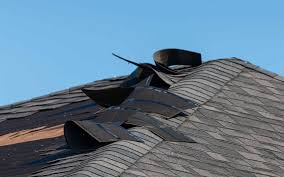A strong wind can change the condition of a roof in a matter of hours. Shingles shift, metal bends, and water finds crevices that were never there before. Sometimes the problems are obvious, but just as often they stay hidden until the next storm makes them worse.
In such circumstances, experienced roofers like Roofscape prove their value. They repair vulnerable sections early, and keep homes safe and costs under control. Understanding how wind leaves its mark is the first step in roof protection for the long run. This article explores the common types of wind damage that affect residential roofs and why timely attention prevents larger repairs.
Shingle Loss and Displacement
High winds pull at shingles until they lift or tear away. This leaves the underlayment exposed to rain, which increases the risk of leaks. Even if a few shingles are missing, the problem spreads when new gusts strike the same area.
Complete Removal
In extreme conditions, entire sections of shingles rip away from the roof deck. Once exposed, the wood beneath deteriorates quickly in rain and sunlight. Replacement of the missing area becomes necessary to prevent wider structural decay.
Misaligned and Curled Edges
Sometimes shingles shift instead of breaking. Misaligned or curled edges no longer block water effectively. Over time, small gaps allow steady seepage into the home’s framework.
read more : Chillproof Technology: Protection Beyond The Wetsuit
Damage to Roof Valleys
Roof valleys collect large volumes of water during storms. When wind lifts materials in these areas, leaks develop rapidly. Because valleys handle so much runoff, even minor wind damage becomes serious.
Sealant Breakdown
Sealant that holds valley flashing in place may crack under repeated wind stress. Once gaps appear, water bypasses the barrier and enters the roof deck. Repairing this section quickly keeps the rest of the roof safe.
Loosened Flashing
Metal flashing can also loosen along the valley. As wind pushes and bends it, the protective seal fails. This opens a direct path for water intrusion.
Gutter and Soffit Damage
Wind does not stop at shingles. Gutters and soffits take heavy strain as gusts push and pull against them. When these components fail, drainage suffers, and the roof faces water overflow.
Broken gutters spill water directly onto walls and foundations. Damaged soffits create weak spots where pests and moisture invade the attic. Both issues increase the total cost of roof restoration.
Lifted Roof Decking
In the worst cases, high winds affect the roof deck itself. Pressure builds under loose shingles and lifts sections of decking away from rafters. Once this bond breaks, the entire roof structure weakens.
Such damage requires immediate attention. Contractors like Roofscape repair or replace these sections before further storms widen the gap. This step prevents catastrophic failure during future weather events.
Hidden Damage
Not every sign of wind damage is visible from the ground. Small cracks, lifted nails, or loose flashing may escape notice. These flaws grow worse each time the roof faces another round of wind and rain. Routine inspections help uncover these silent problems. By addressing them early, homeowners avoid costly interior damage that develops long after the storm has passed.
Wind damage takes many forms, from missing shingles and weakened valleys to broken gutters and lifted decking. Each type reduces the roof’s ability to protect the home. Over time, these problems lead to costly repairs that extend far beyond the roof itself. With guidance from experts, homeowners gain reliable inspections and prompt repairs. By recognizing the signs of wind damage early, families keep their homes safe and their repair costs manageable.

